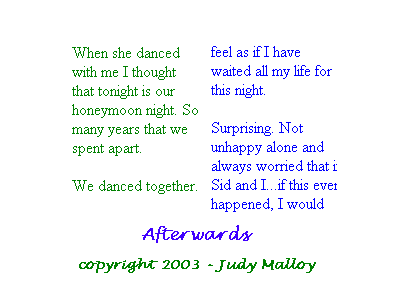Gwen and Gunter = Conversation - Thoughts - Conversation - Conversation - Conversation - Conversation.
Note: The thing is that no matter what option you choose, you read the texts
in the same chronological order, You can read them separated or
together but you read the events in the right order, so we see that the
third option of
reading the text by clicking on the squares at random in not possible.
Because you might read one sequence before another that would go first
in the story.
Opinion a posteriori:
After having read this hypertext several times, I can say without a
doubt that I am grateful of having choose this text as my first
hypertext. It's been easy to read and easy to understand. And the
author helps you to solve the little problems you can find such as the
order to follow (helping you with the link "afterwards" ) or the order
to read the appearing conversations (the fragments of text appear
slowly to give you time to read it and to see what is the order to
follow) and also she helps you bordering the squares in blue to know
which ones you have read and which ones not.
All this little help as well as the story, that is easy
and interesting to read, make this text a fantastic way to
initiate yourself into the world of hypertexts.
© Malloy, Judy. "Afterwards".
The Well. 2008. 6 Dec 2008
<
http://www.well.com/user/jmalloy/dorothyandsid/ds.html>



